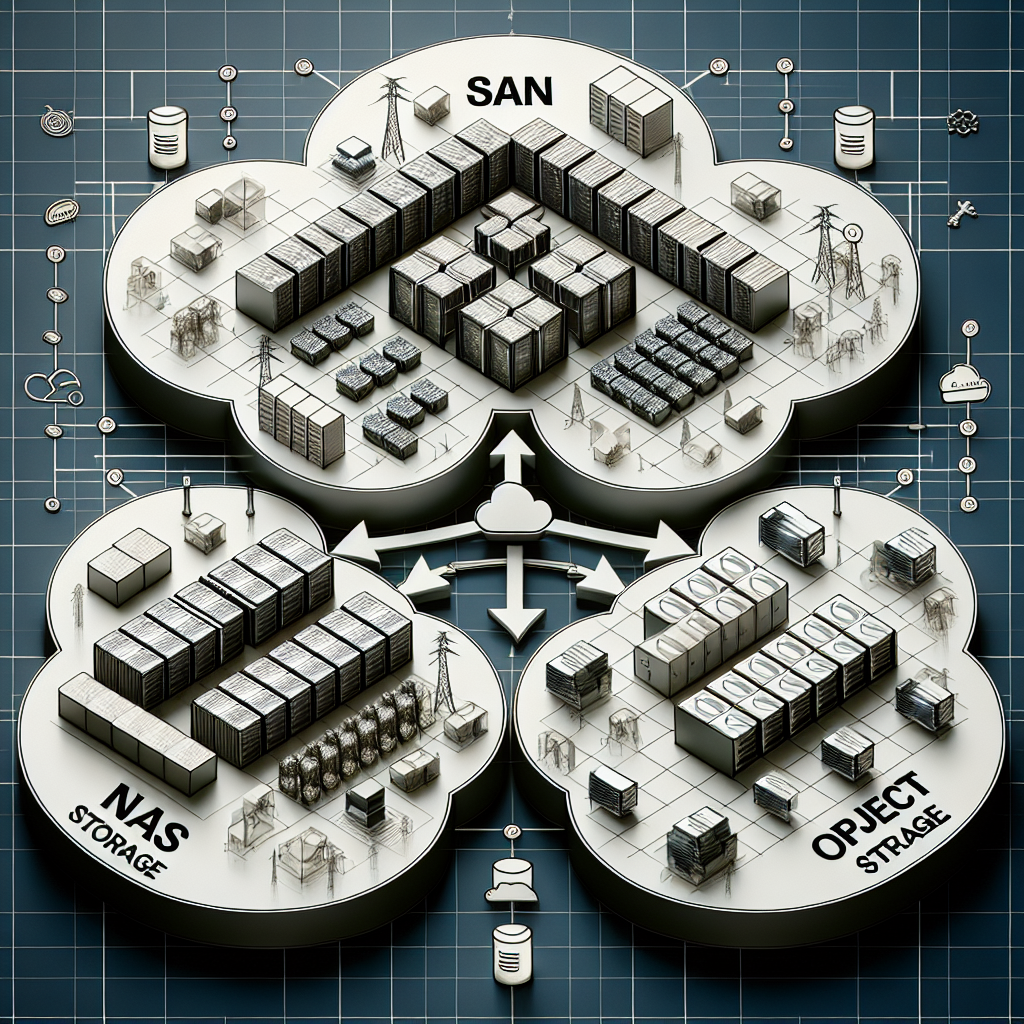Your cart is currently empty!
Data Center Storage Solutions: Comparing SAN, NAS, and Object Storage

Data centers are the heart of any modern IT infrastructure, serving as the central hub for storing and managing vast amounts of data. As data volumes continue to grow exponentially, organizations are faced with the challenge of selecting the right storage solution to meet their specific needs. Three of the most common storage solutions available are SAN (Storage Area Network), NAS (Network Attached Storage), and Object Storage. Each solution has its own unique characteristics and benefits, making it important for organizations to carefully consider their requirements before making a decision.
SAN is a high-performance storage solution that is typically used for mission-critical applications and large-scale enterprise environments. SAN is a dedicated network of storage devices that are separate from the main network, allowing for fast and reliable access to data. SAN provides block-level storage, which means it can be accessed and managed at the individual block level, making it ideal for applications that require high performance and low latency. SAN is also highly scalable, allowing organizations to easily expand their storage capacity as needed.
NAS, on the other hand, is a more cost-effective and user-friendly storage solution that is commonly used in smaller organizations and departmental environments. NAS is a file-level storage solution that allows multiple users to access and share files over a network. NAS is easy to manage and configure, making it a popular choice for organizations that do not have dedicated IT staff. However, NAS is generally slower than SAN and may not be suitable for high-performance applications that require low latency.
Object Storage is a newer storage solution that is designed to handle massive amounts of unstructured data, such as images, videos, and documents. Object Storage stores data as objects, which are stored in a flat hierarchy and can be accessed via a unique identifier. Object Storage is highly scalable and cost-effective, making it ideal for organizations that need to store large amounts of data in a cost-effective manner. However, Object Storage is not as fast as SAN or NAS and may not be suitable for applications that require high performance.
When comparing SAN, NAS, and Object Storage, organizations should consider their specific requirements, such as performance, scalability, cost, and ease of management. SAN is best suited for high-performance applications that require low latency, while NAS is ideal for smaller organizations with limited IT resources. Object Storage is a cost-effective solution for storing large amounts of unstructured data. By carefully evaluating these factors, organizations can select the storage solution that best meets their needs and ensures the efficient management of their data.

Leave a Reply